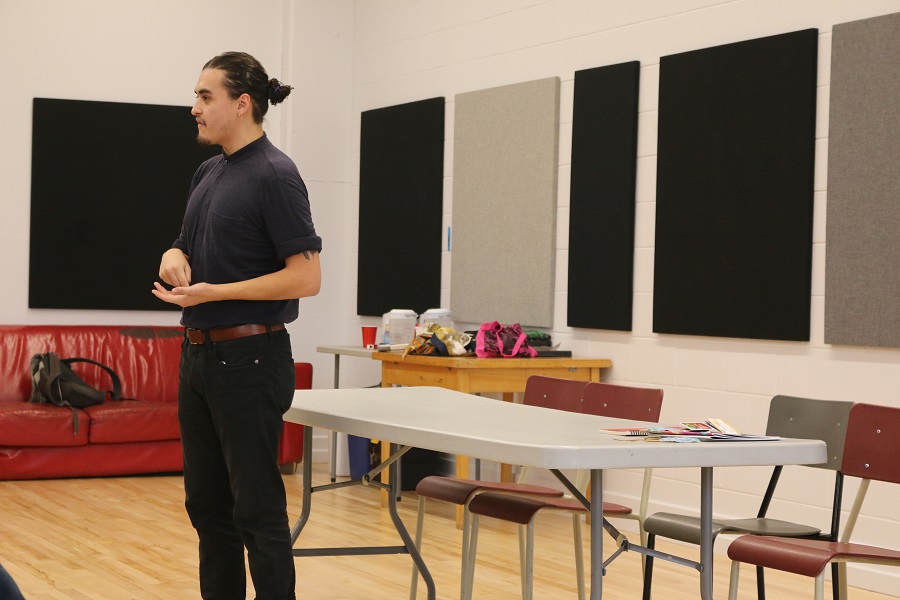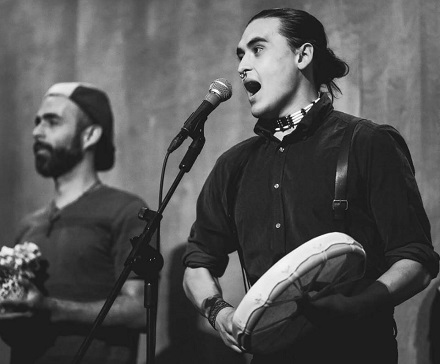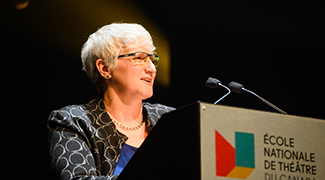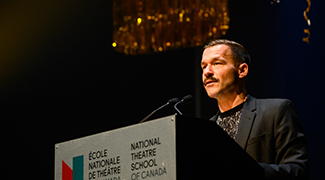Some Thoughts on Lava and Diversity


I have been thinking a lot lately about the constantly evolving community dialogue about diversity in the arts. Conversations about creating a learning environment that is accessible for all learners and teachers to teach and learn in a safe way. This current state of ideas is not unlike the molten crust of a newly forming island, growing and groaning as it violently and beautifully settles from a hot mess into a land full of growth and jungles and animals and bugs. I believe we are currently in the lava field period and have been for some time, which is (if you’ve ever seen a lava field) extremely exciting and dangerous. We are on this molten island, looking at the seemly dangerous parts, and we need to find a way to maintain the work while standing next to a ridiculously porous and molten hot idea.
These conversations are trying to make spaces more inclusive. This means growing as a theatre community to make sure everyone has equal opportunities and standards of working. This work has been happening for a long time and we are a part of a long legacy of people trying to make things better. My perspective on diversity has been influenced by different readings and experiences around intersectional feminism, decolonization, anti-oppression training, and my own experiences as an Indigenous cisgender man (all of which can be googled easily).
Something I’ve noticed in my time in institutional learning spaces is that sometimes the acting pedagogy feels dated when engaging with a diverse group of individuals. Theatre training institutions were historically white spaces but now are in a fiery lava mess (trying to adapt to a diversity of voices). When the work asks for emotional vulnerability, some students can’t help but access a raw, visceral experience that stems from being part of a marginalized community, such as the experience of racism or intergenerational trauma, as opposed to a place of emotional availability demanded by the exercise. The work never really asks this of the students, but often exercises do ask for a large level of exposure, be it to train impulses or drop into a heavy image, or access a released body. These exercises may unintentionally touch on raw feelings that marginalized people carry just by simply existing. How can we update this pedagogy while still challenging actors? I do not think the answer lies in stopping any certain way of teaching, but by building new systems to co-exist with older ones.
I’m not arguing that students need to be taken care of in acting programs, or that my needs should be met first and foremost. But there needs to be an alternative to “Stop if it hurts.”
There’s a concept I learned from an instructor in my time studying at NTS (Brenda Bazinet), which is “playing a negative.” As an actor, I often fall into a hellish spiral where I play a negative, meaning I’m afraid of acting large or making an inappropriate offer. This truly stifles the actor’s process. I have learned to resist this and confidently trust that my director will tell me if the offer is too big or small. I think the same idea can be used for engaging with the question of diversifying pedagogy. Instead of shying away from the difficulty of the conversation of how pedagogy needs to evolve, lean into the conversation and find out how much is too much. Trust that students can speak for themselves before assuming what their limitations are.
When trying to move toward an equitable pedagogy that allows for all identities to engage in the work equally, I feel we should move away from the don’t-do-it-if-it-hurts mentality, and towards a more informed offer when dealing with specific student needs.
When trigger warnings started being implemented, they were meant to allow for students to care for themselves in the presence of harmful topics, but were never intended to put a stop to teaching. The warnings were created to recognize and respect that some people may have a hard time engaging with things that actively reflect their marginalization, while still allowing for everyone to learn what needs to be said. This idea has been removed from its original context and misunderstood as something intended to stop a teaching. In a theatre institution, all parties involved need to be accountable to learning, as opposed to one side doing all the adapting. It takes work from everyone, both student and teacher, actor and director, to find a way to navigate the lava instead of fearing it. It’s totally possible.
These thoughts might be as rocky as my island metaphor but they stand as my contribution to this ever-growing and evolving land mass of diversity that one day will house all of our creative spirits, as different as they can be, and all celebrated and challenged equally as all having access to a part of the island. At least until the next hot mess of a beautiful new concept comes exploding out of our collective societal consciousness. That’s it. That’s all.
–Todd Houseman (Acting 2nd year, Edmonton)




Commentaires